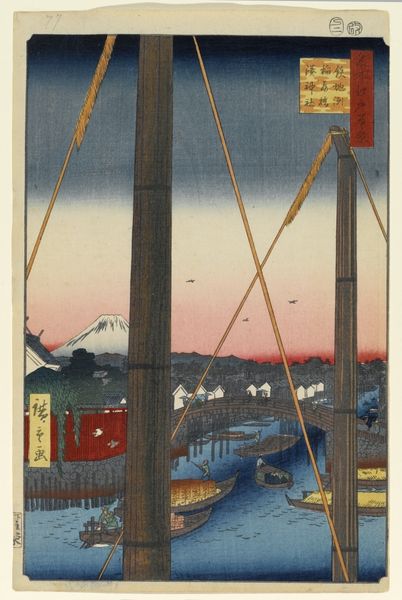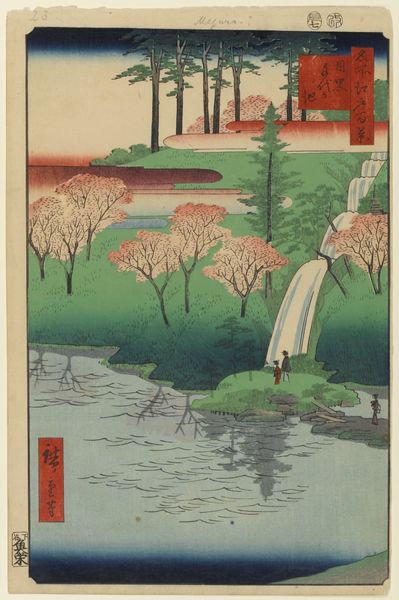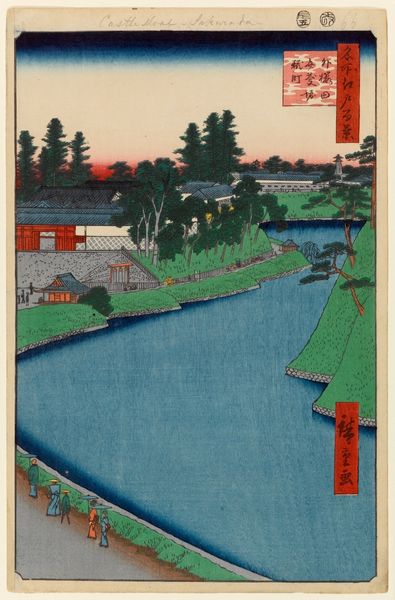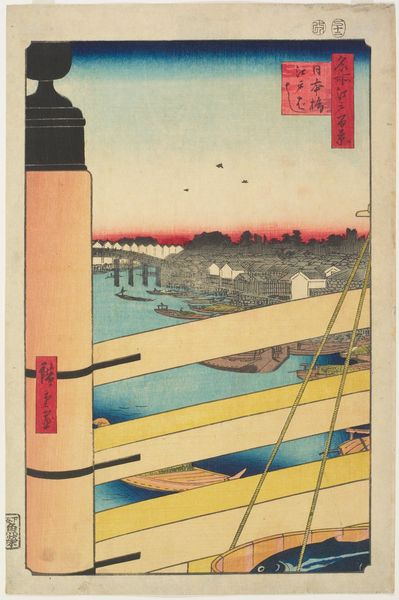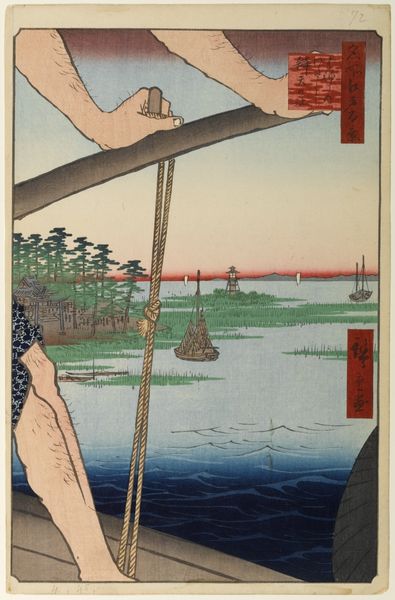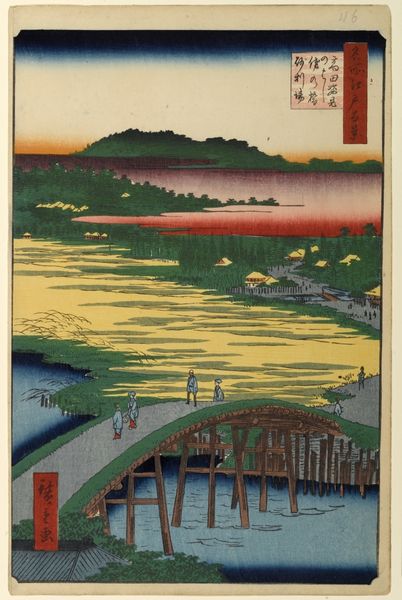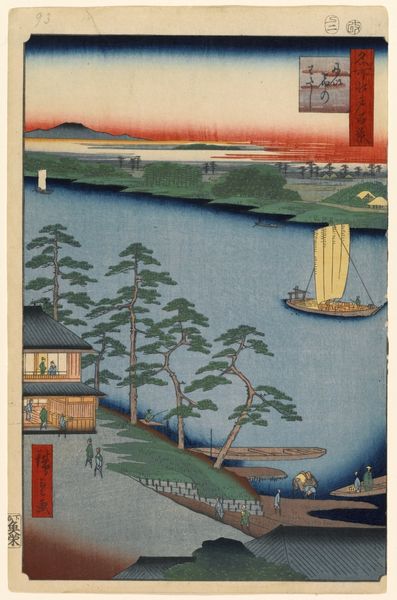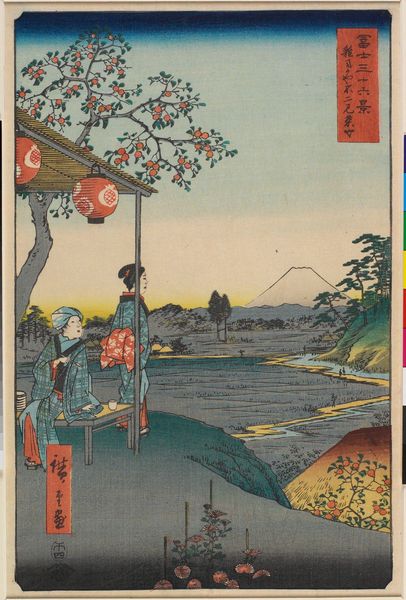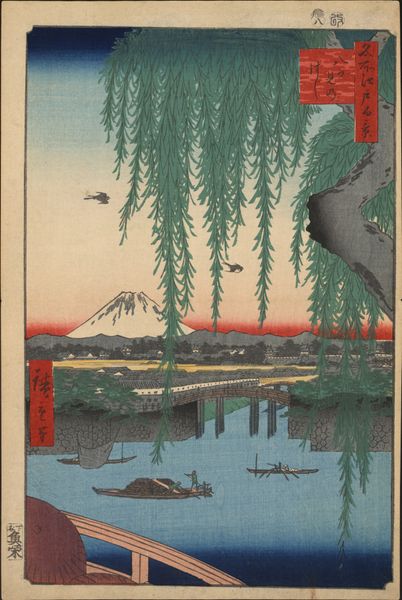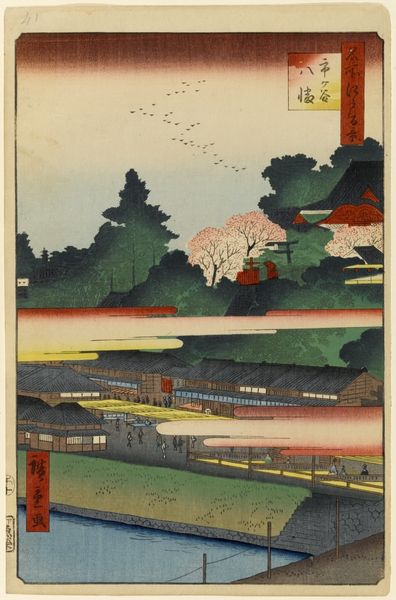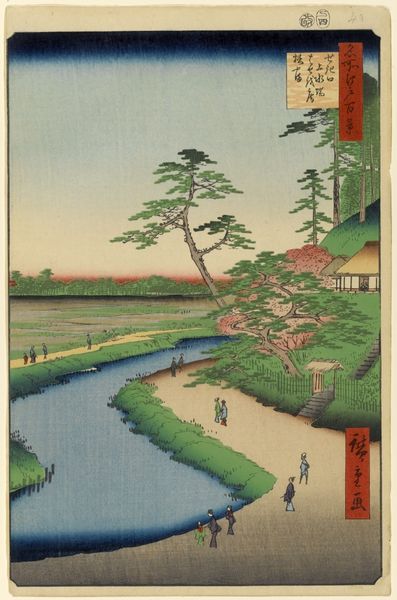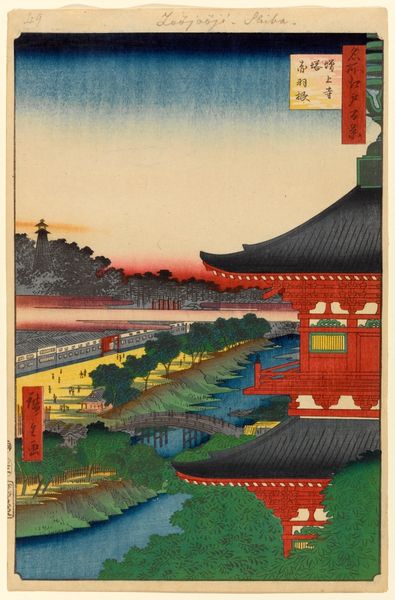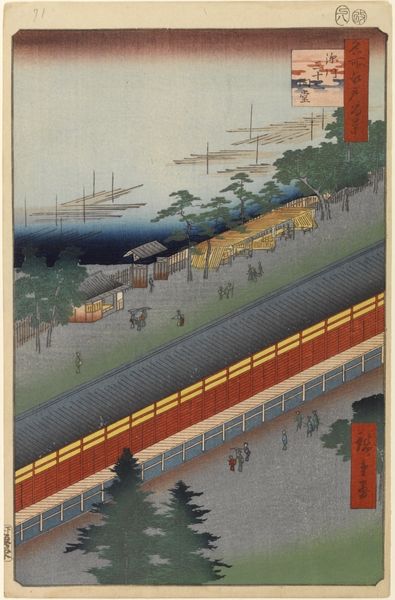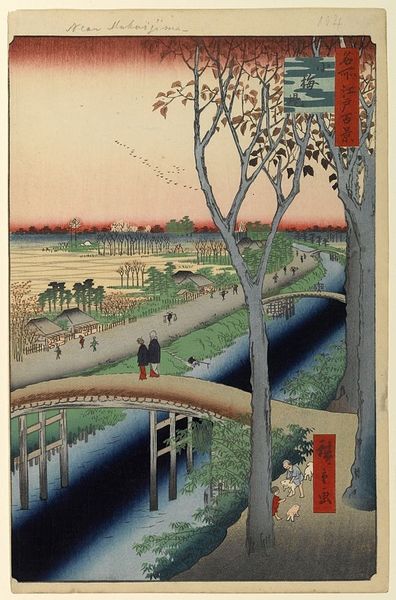
print, paper, ink, woodblock-print
# print
#
asian-art
#
landscape
#
ukiyo-e
#
paper
#
ink
#
woodblock-print
Copyright: Public domain
Curator: The ink and color woodblock print before us is entitled "Hatsune Riding Ground in Bakuro Chō," created by Utagawa Hiroshige in 1857. Editor: There's an incredible sense of suspended festivity. The low-hanging fabric gives it a very carnival-like atmosphere, contrasting with that looming tower. Curator: Indeed, Hiroshige masterfully balances elements of celebration with subtle indications of authority. That wooden tower, with what appears to be a bell at the top, could represent both community watch and perhaps a signal for ceremonial occasions. The long view given through the canopies draws the eye to it, framing it carefully within a social landscape. Editor: The placement is purposeful, certainly. The scene seems crowded but controlled. I’m also interested in these bands of color overhead. What role do you think these broad brushstrokes serve? Is this a commentary on commerce and social display within Edo period Japan? Curator: They are reminiscent of streamers, certainly, visually representing an event taking place at this Hatsune riding ground. It contributes to a joyous image, further underscored by the simplified silhouettes of passersby near what appears to be small booths. Let’s not overlook that a single darker silhouette interrupts the entire vista! I believe these forms of temporary coverings for commercial display, are as meaningful now as when Hiroshige crafted this view. Editor: Agreed! They really activate the pictorial space, guiding our eyes and, potentially, mirroring the stratified structure of Edo society, right? While on first impression the color palette and woodblock are so harmonious together, beneath the festive surface there is an ever present gaze that monitors the crowds passing below, at every celebration. Even in pleasure there is supervision. Curator: Precisely, this balance, or perhaps even subtle tension, between celebratory commerce and oversight embodies the artist's intention. He doesn't just paint what’s pretty. Instead, through these assembled signs and details he creates complex allegories. Editor: Knowing that history, and studying this print through that lens truly reframes this tranquil scene, don’t you think? It makes you aware of not only a beautiful image, but all the human context trapped beneath layers of ink. Curator: Exactly, art such as this encourages deeper examination of not just forms, but collective memory. It bridges past, present and potentially, the future we create based upon cultural insight.
Comments
No comments
Be the first to comment and join the conversation on the ultimate creative platform.
